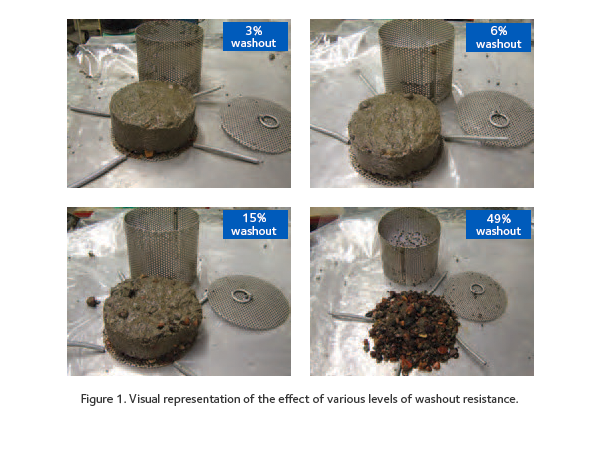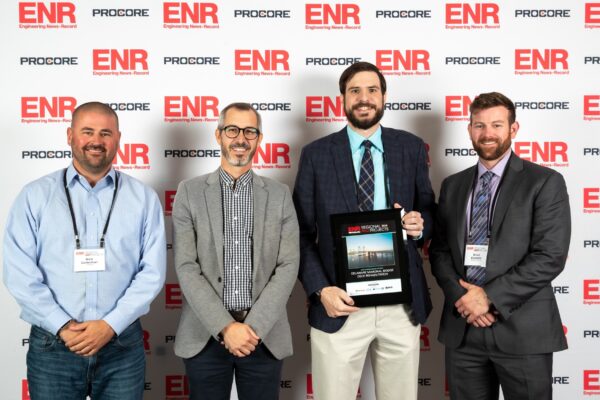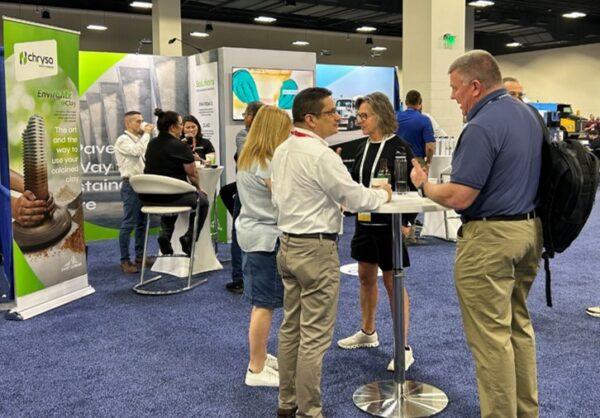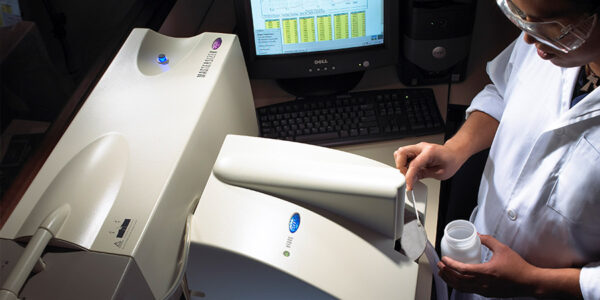Using V-MAR® 3 (Rheology Modifying Admixture) to Place Underwater Concrete – TB-1401

The ability to directly place concrete underwater is desirable because the concrete can be placed by tremie, pump or free dump into areas covered with water, without the need to dewater the site, thus lowering construction costs.
In the past, environmental agencies have expressed concern about the effects of alkalis and washed-out cement particles on aquatic life. One way to at least partially address these concerns is by using antiwashout concrete admixtures.
The successful placement of concrete underwater is dependent on a number of factors including having a suitable concrete mix. A highly flowable, low water to cement ratio concrete, manufactured with relatively high amounts of fine sand is usually a minimum requirement. Additional recommendations for underwater concrete mix proportioning and placement can be found in ACI 304R (Guide for Measuring, Mixing, Transporting, and Placing Concrete) and ACI 546.2R (Guide to Underwater Repair of Concrete).
The U.S. Army Corps of Engineers has been instrumental in developing tools to aid the industry in the development of suitable mixtures for placing concrete underwater. The two key documents produced to date are CRD-C 61-89A Test Method for Determining the Resistance of Freshly Mixed Concrete to Washing Out in Water (issued 12/01/1989) and CRD-C 661-06 Specification for Antiwashout Admixtures for Concrete (issued 03/01/2006).
V-MAR® 3 has a unique polymeric structure that, under the influence of energy (e.g. vibration, mixing or pumping), aligns itself and allows concrete to easily flow. At this point the polymers slide over each other in the direction of flow and reduce the yield stress of the concrete. As energy is removed, the polymers interlock leaving the concrete as it was before movement. These properties make V-MAR® 3 an ideal candidate for use as an Antiwashout Admixture.
Typical specifications call for 5–8% maximum washout to reduce laitance. Although these limits are relatively easy to achieve in the lab, under field conditions such limits are rather difficult to achieve. The use of an antiwashout admixture, such as V-MAR® 3, can simplify the approach to developing a mix design with the required level of washout resistance. Although an actual washout of 5–8% sounds like a large amount of material to be discharged into a body of water, Fig. 1 shows that such a weight loss can have a rather negligible effect on the make-up of the concrete mixture being placed.
The negligible effect of a 5–8% washout can also be surmised from the data in Table 1, which clearly illustrates how the use of V-MAR® 3 can significantly reduce the amount of washout from concrete without much of an impact on the other physical properties of the concrete. We can see that it has no measurable effect on time of set, and an insignificant impact on air entrainment and strength development.

Table 1. V-MAR® 3 Performance in Tests Done According to CRD-C 661-06
| Materials / Properties | English Units | SI Units | ||||||
|---|---|---|---|---|---|---|---|---|
| Cement | lbs/yd3 | 675 | 675 | 675 | kg/m3 | 400 | 400 | 400 |
| Stone | lbs/yd3 | 1565 | 1565 | 1565 | kg/m3 | 929 | 929 | 929 |
| Total Sand | lbs/yd3 | 1565 | 1565 | 1565 | kg/m3 | 929 | 929 | 929 |
| Total Mix Water | lbs/yd3 | 270 | 270 | 270 | kg/m3 | 160 | 160 | 160 |
| ADVA® 360 | oz/100 lbs | 4.75 | 5.00 | 5.25 | mL/100 kg | 310 | 326 | 342 |
| V-MAR® 3 | oz/100 lbs | – | 8.0 | 9.0 | mL/100 kg | – | 522 | 587 |
| Slump | in. | 6.25 | 6.75 | 7.00 | mm | 160 | 170 | 180 |
| Air | % | 3.4 | 2.8 | 3.9 | % | 3.4 | 2.8 | 3.9 |
| Initial Set | hrs:min | 3:40 | 3:40 | 3:40 | hrs:min | 3:40 | 3:40 | 3:40 |
| Compressive Strength @ 3 Days | lbs/in.2 | 5100 | 5040 | 4850 | MPa | 35.2 | 34.8 | 33.4 |
| Compressive Strength @ 7 Days | lbs/in.2 | 6060 | 6190 | 5820 | MPa | 41.8 | 42.7 | 40.1 |
| Compressive Strength @ 28 Days | lbs/in.2 | 7490 | 7600 | 7210 | MPa | 51.6 | 52.4 | 49.7 |
| j | ||||||||
| Materials / Properties | English Units | SI Units | ||||||
| Shrinkage Increase over Control | % | – | -0.009 | -0.002 | % | – | -0.009 | -0.002 |
| Washout | % | 14.9 | 5.8 | 3.1 | % | 14.9 | 5.8 | 3.1 |
CRD-C 661-06 requires that a control mix design be chosen that exhibits 10–20% weight loss (washout). The test mixture (concrete containing the antiwashout admixture) must then be able to reduce the amount of washout to 50%, or less, of the control to be classified as an antiwashout admixture. As with other concrete standards, such as ASTM C494, this specification is designed to ascertain whether a product exhibits performance characteristics suitable for use as an antiwashout admixture, and not to provide a universal underwater concrete mix design.
For specific projects, maximum washout specifications will influence how the concrete is proportioned. Maximum antiwashout limits are typically 5–8%, depending on the perceived threat to the environment. The concrete will typically have a high cementitious content, 600 lbs/yd3 (356 kg/m3) or higher, and a maximum w/cm of 0.45 or less. Pozzolans are frequently used to improve flow characteristics and reduce potential for laitance. Fine aggregate contents are in the 45–55% range by volume of total aggregate, and slumps run 6–9 in. (150–230 mm) or even higher, if long flows are required. Air entrainment should be avoided unless the concrete will be exposed to freezing and thawing cycles.
Final mixture selection should be based, if possible, on test placements made under water in a placement box or in a pit that can be dewatered after placement. Test placements should be examined for concrete surface flatness, amount of laitance present, quality of concrete at the extreme flow distance, and flow around embedded items, if appropriate.
Concrete placed under water can be expected to be of excellent quality, as curing conditions will be excellent and the compressive strengths of the rich mixtures will often range from 4000 to 8000 psi (28 to 55 MPa).
Conclusion
V-MAR® 3 has been shown to exhibit adequate antiwashout properties when tested according to CRD-C 661-06. However, since antiwashout performance is very dependent on mix proportions, fineness of materials, w/c ratio, and slump, potential mix designs for a specific project should be tested, with actual job materials, to ensure that the antiwashout performance of the chosen concrete design will meet the actual project specification.





